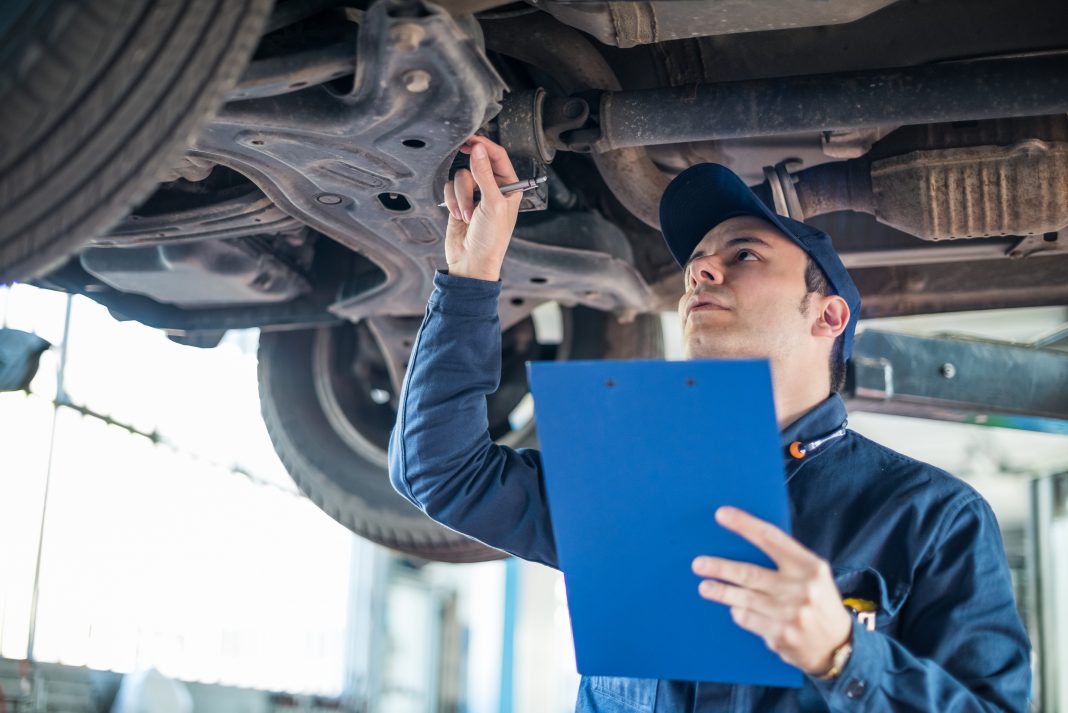Workplace accidents are unfortunate and, in many cases, altogether avoidable. Some incidents can be minor losses to property alone or it could be a minor injury like a burn or a cut. The automotive service department can be a dangerous place at times, and a mishap can drop a heavy vehicle to the ground in an instant, crushing whatever is in its path.
Such is the case for a work accident in mid-November at a dealership in Pensacola, FL. WEAR-TV reports that an experienced mechanic, Cleveland Fountain, was killed when a heavy-duty truck shifted on the hoist before toppling off, pinning the tech under the vehicle. The accident is under investigation by OSHA and a cause has not been confirmed.
The accident is a sobering reminder that dealerships are operated by real people with families, and the onus is ultimately on the dealership to ensure the equipment in use is as safe as possible to use.
OSHA requires a safe work environment
One factor that’s sure to be inspected in the OSHA investigation is the fitness of the equipment in use, and whether the technician was operating it properly and safely. It will be painstakingly reviewed to determine if the lift was in working order and if the technician lifted the vehicle at the proper points and with the right adapters, not to mention ensuring the lift was resting on its locks. The investigation is sure to feel intrusive, and the outcome could include fines, regular OSHA inspections, and even charges.
Dealers and independent shop owners alike would love to avoid unnecessary attention from OSHA, and that begins by establishing a safe work environment that prevents workers from accidents and near misses. The ‘right to know standard’ enforces that an employee has the right to know which chemicals are used and how they can affect them. Protective equipment must be worn in the shop including eye protection, ear protection, and head protection. Regulations exist for proper tool storage, and the floor must be kept uncluttered and clean to prevent slips and falls.
As well, OSHA lays out the requirements for equipment inspections, particularly for service lifts.
| Related: Where service sales should focus as winter digs in |
Equipment must be routinely inspected
OSHA does not have certification requirements for automotive service equipment. However, it is incumbent on the shop to provide a safe working environment for its employees. An incident with verifiable safety issues that does not meet its manufacturer’s safe operating conditions can be held liable. For vehicle hoists, the accepted standard for hoists is the ANSI/ALI ALOIM: 2020 Standard for Automotive Lifts – Safety Requirements for Operation, Inspection and Maintenance.
 Other shop equipment will have similar criteria for safe operation. Tire changing equipment can pinch and crush hands, for example. A brake lathe, a strut compressor, and a hydraulic press might seem like rudimentary tools, but the manufacturer has inspection criteria and maintenance requirements that should always be followed.
Other shop equipment will have similar criteria for safe operation. Tire changing equipment can pinch and crush hands, for example. A brake lathe, a strut compressor, and a hydraulic press might seem like rudimentary tools, but the manufacturer has inspection criteria and maintenance requirements that should always be followed.
Shop maintenance is seen as an expense. However, avoiding accidents wherever possible can keep your team intact and limit the dealership’s exposure to blowback.The benchmark for all automotive repair shop equipment is an inspection daily before use by the operator and, at minimum, an annual servicing for maintenance. No potential safety issues should every be overlooked, especially for vehicle lifts, as a single broken strand on a lift cable can cause serious issues if it jams, plus it indicates further wear that needs attention.
Did you enjoy this article from Jason Unrau? Read other articles on CBT News here. Please share your thoughts, comments, or questions regarding this topic by submitting a letter to the editor here, or connect with us at newsroom@cbtnews.com.
Be sure to follow us on Facebook and Twitter to stay up to date or catch-up on all of our podcasts on demand.
While you’re here, don’t forget to subscribe to our email newsletter for all the latest auto industry news from CBT News.










